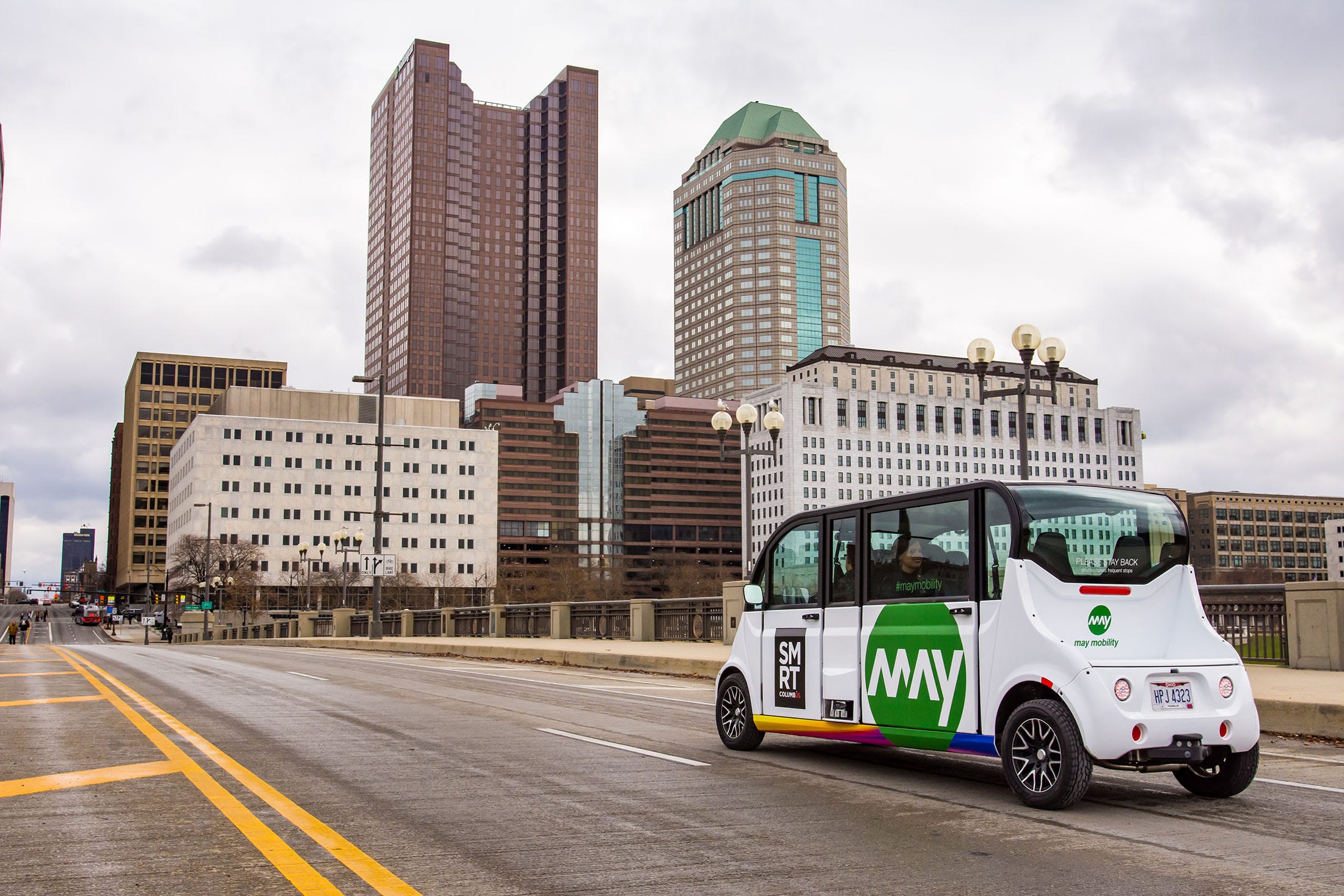As Smart Columbus transitions after grant, region advancing autonomous vehicles

Imagine taking your family around Downtown Columbus to COSI, the National Veterans Memorial and Museum, Bicentennial Park and the Smart Columbus Experience Center. Instead of the hassle of finding multiple parking spaces or walking along busy roadways, what if a self-driving electric car was your chauffeur?
From December 2018 to September 2019, more than 16,000 people didn’t have to use their imagination to experience the future of urban transportation. Smart Circuit on the Scioto Mile was launched as an autonomous vehicle pilot by DriveOhio and Smart Columbus to give visitors and residents a taste of how self-driving technology can improve people’s lives.
The Smart Columbus team—formed as a public-private partnership between the Columbus Partnership and the city of Columbus after the city won the Smart City Challenge in 2016—also ran an autonomous shuttle project to support Linden residents in getting to school, work, doctor’s appointments and other critical activities.
The pilots dovetailed into collaboration among a powerhouse group of partners with deep automotive industry experience including Honda, the Route 33 Smart Mobility Corridor, Ohio State University and Transportation Research Center. With the autonomous vehicle market projected to surpass $65 billion by 2027, sources interviewed for this story say central Ohio is ripe to become a hub of mobility innovation.
“The Smart Circuit and Linden LEAP deployments were powerful firsts in the state and the country,” says Jordan Davis, director of Smart Columbus. “They showed our technologists and our residents what the technology is capable of today—not some hypothetical future state.”
Who’s involved
The TRC has made a huge bet on the future of self-driving cars with its new $45 million SMARTCenter at its East Liberty vehicle testing grounds. Sitting on 540 acres, it is billed as the “largest, most comprehensive contained testing site in North America for advanced vehicle technologies.” The automated and connected vehicle testing facility has more than 1.1 million square feet of pavement and more than 20,000 linear feet of underground electrical conduits. It opened in 2019 in partnership with JobsOhio, DriveOhio, the Ohio Department of Transportation and Ohio State University.
SMARTCenter—used by leading automotive companies to test and refine advanced mobility systems—is expanding as the result of an agreement with Waymo, a unit of Google parent Alphabet Inc. Waymo will establish a permanent presence at TRC to advance its Waymo Driver fully autonomous driving technology and driverless Class 8 truck.
Much of the innovation at the SMARTCenter will be focused on making self-driving cars safe. Adaptive cruise control, lane keep assist and emergency braking, for example, all have ties to TRC.
“What we’re experiencing now … we’re starting to see the fruits of a transformation in mobility that’s unlike anything we’ve seen in the last 100 years,” says Brett Roubinek, TRC’s president and CEO. “We’re headed to a safer place, a more inclusive place and that’s critical to all of us and to the quality of our lives.”
That transformation includes the public-private partnership that is developing what Luke Stedke refers to as the “crown jewel” of the innovation that’s taking place in the state. The U.S. 33 Smart Mobility Corridor, “the world’s longest connected highway” that begins in Dublin, travels through Marysville and ends at the front door of the TRC in East Liberty, is being built as an ecosystem for connected, automated and electric travel.
Stedke, managing director, communications and policy at DriveOhio, says autonomous vehicle innovation extends well beyond central Ohio. DriveOhio’s FlyOhio initiative includes work at the Springfield-Beckley Municipal Airport that’s developing and deploying technology to allow advanced air mobility vehicles and drones to fly safely over longer distances. As advanced mobility technologies mature on the ground and in the air, he says Ohio is well positioned to lead the 21st century economy and the transportation system it will enable.
“If you’re going to sell an automated or connected vehicle anywhere around the globe it will have to master Ohio’s weather, geography and urban and rural settings,” Stedke says. “Ohio is the perfect microcosm for any market in the world.”
Laura Newpoff is a freelance writer.